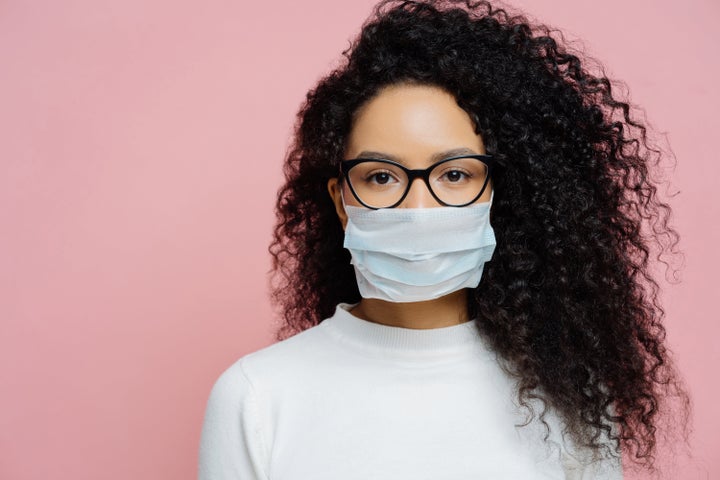We all know by now that wearing a face mask can keep germs away from your nose and mouth. But what about your eyes? Aren’t they letting in germs, too?
For a new study, scientists in China wanted to find out how glasses-wearing impacts COVID-19 risk. They analyzed data from 276 patients hospitalized with COVID-19 in Suizhou, China, from January to March this year to see how many wore glasses.
The number of COVID-19 patients in the hospital who wore glasses was lower (5.8%) than that of the local population who wore glasses (31.5%), they found.


Viorel Kurnosov via Getty Images
Viruses like COVID-19 primarily enter the body through the nose and mouth, but it’s also thought the virus can infiltrate your system through the membranes in the eyes.
Researchers in China noticed the proportion of glasses-wearers among patients with coronavirus disease was small, so they wanted to investigate why this might be.
They studied all inpatients with COVID-19 in Suizhou Zengdu Hospital, China, from January 27 to March 13 2020, to compare glasses-wearers (those who wore glasses for more than eight hours a day) with non-glasses-wearers.
A total of 276 patients with COVID-19 were enrolled onto the study. Of these, 155 (56.2%) were male, and the median age was 51. All those who wore glasses for more than eight hours a day had myopia (meaning they were short-sighted) and included 16 of 276 patients.
In Hubei province, it’s thought the proportion of people who are short-sighted is 31.5%, which was much higher than the proportion of patients with COVID-19 who were short-sighted. Some reports suggest as many as 80% of the population in China have myopia.
Researchers concluded that the proportion of inpatients with COVID-19 who wore glasses for extended daily periods was smaller than that in the general population. They suggested, therefore, that daily wearers of glasses may be less susceptible to COVID-19.
But Dr. Amir Khan, a doctor for the NHS, cautions that this is just one study with a small sample size showing an association between wearing glasses and reduced COVID-19 rates, rather than direct cause and effect.
“To draw any firm conclusions from this would be entirely premature, but there are some things we can take note of,” he wrote in an article for Al Jazeera.
Khan pointed out that the eyes “may be an important route of entry to the body for the coronavirus”, and noted there have been reports of patients having eye symptoms like conjunctivitis, which signals infection.
“Theoretically, wearing glasses forms an extra barrier in front of our eyes, protecting them from an infected respiratory droplet,” he said. They might also stop us from touching our eyes, which is how the virus could enter the body if we had it on our hands.
“Theoretically, wearing glasses forms an extra barrier in front of our eyes.”
– Khan
That said, he points out that while goggles are appropriate to reduce the risk of catching COVID-19 in medical settings as they have a tight seal around the eye, glasses only offer protection to the front and sides.
Simon Kolstoe, a senior lecturer in evidence-based healthcare at the University of Portsmouth, says a controlled trial or test is now needed to firm this up. “Ideally, this would follow two carefully matched groups of people – some wearing glasses and some not wearing glasses – to see which group gets infected more often,” he wrote in a piece for The Conversation.
“Evidence from such a controlled trial will always be far stronger than evidence from an observational study such as that in the recent paper.”
Credit: Source link